Watching A Snowflake Grow Seems Almost Magical–the Six-sided Shape, The Symmetry, The Way Every Arm
Watching a snowflake grow seems almost magical–the six-sided shape, the symmetry, the way every arm of it grows simultaneously. But it’s science that guides the snowflake, not magic. Snowflakes are ice crystals; their six-sided shape comes from how water molecules fit together. The elaborate structures and branches in a snowflake are the result of the exact temperature and humidity conditions when that part of the snowflake formed. The crystals look symmetric and seem to grow identical arms simultaneously because the temperature and humidity conditions are the same around the tiny forming crystals. And the old adage that no two snowflakes are alike doesn’t hold either. If you can control the conditions well enough, you can grow identical-twin snowflakes! (Video credit: K. Libbrecht)
More Posts from Sciencebloggin and Others
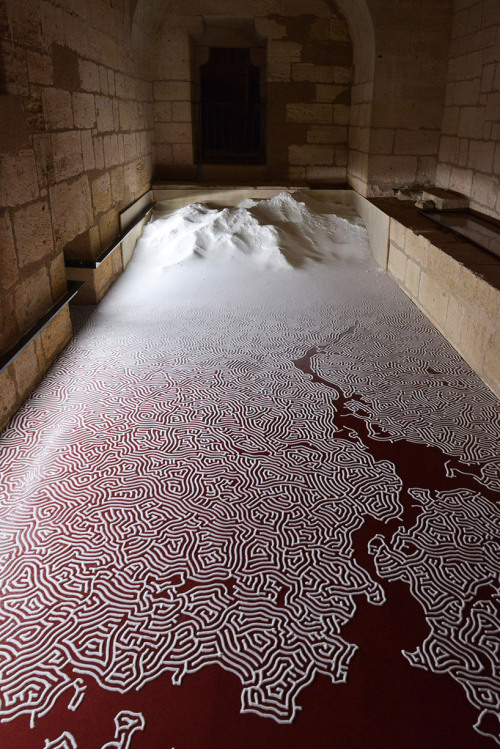
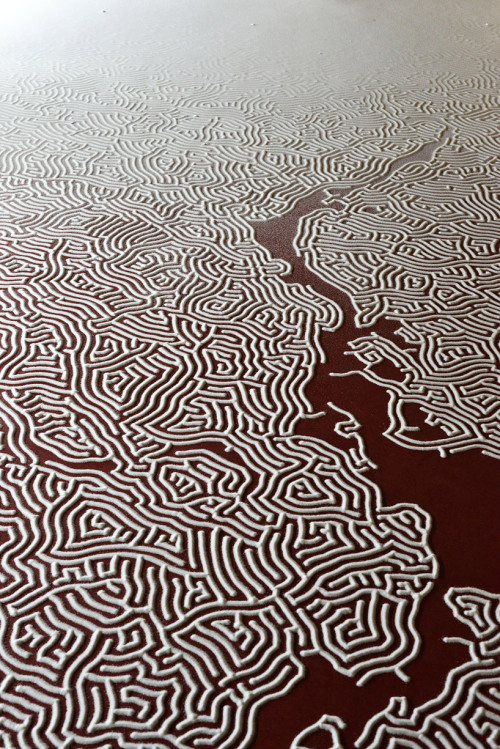
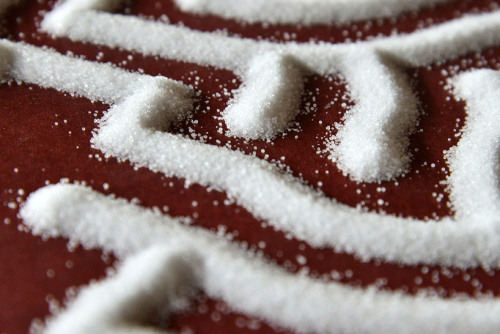
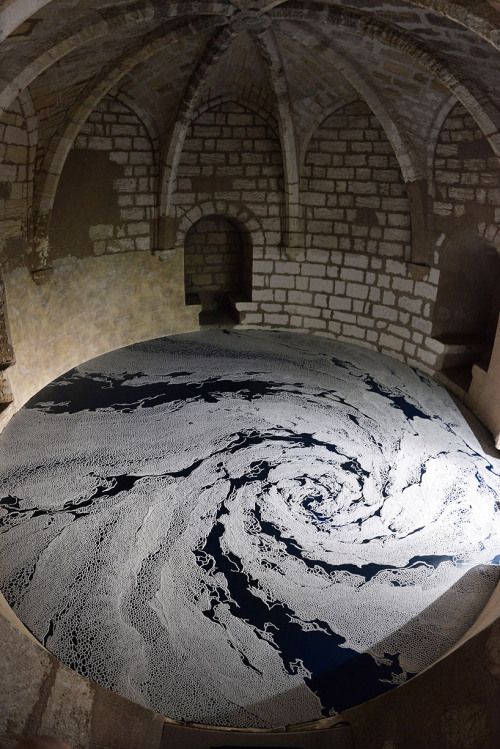
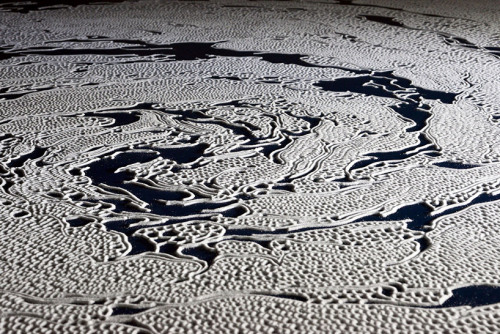

Elaborate Salt Labyrinths by Japanese Artist Motoi Yamamoto

Pulling apart duct tape causes chemical bonds to break which indirectly gives rise to a faint blue glow in an effect called triboluminescence




Fata Morgna
A Superior Mirage that comes from the Italian term named after the Arthurian sorceress Morgan le Fay, from a belief that these mirages, often seen in the Strait of Messina, were fairy castles in the air or false land created by her witchcraft to lure sailors to their deaths. It’s also believed that this illusion caused the myth of The Flying Dutchman to emerge.
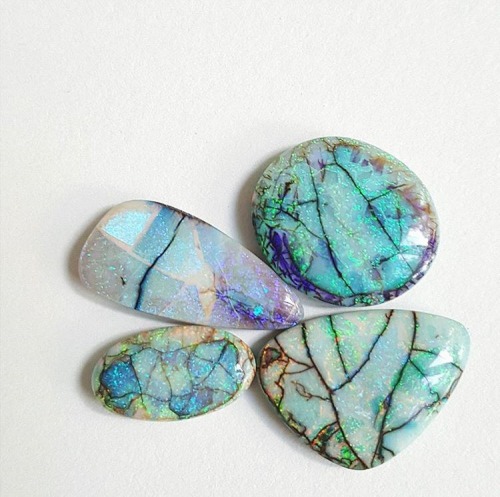
Monarch Opals via @e.s.co //////
www.instagram.com/e.s.co
www.mineraliety.com
the fact elon mask genuinely might ruin the night sky for everyone makes me wanna sharpen my shovel and get to work

My eyes just aren’t sure how.
These are called RGB dispersion prisms
you can buy them here…




dude.
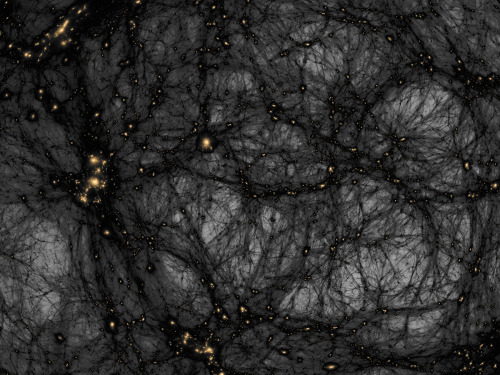
Distribution of dark matter in the universe, as simulated with a novel, high-resolution algorithm at the Kavli Institute of Particle Astrophysics & Cosmology (KIPAC) at Stanford University and SLAC National Accelerator Laboratory. (Via Space.com)
Credit: AMNH. They also have a friendly video introducing dark matter:
-
 sciencebloggin reblogged this · 1 year ago
sciencebloggin reblogged this · 1 year ago -
 techjum reblogged this · 4 years ago
techjum reblogged this · 4 years ago -
 waennsch-daennscho liked this · 5 years ago
waennsch-daennscho liked this · 5 years ago -
 cloudair liked this · 6 years ago
cloudair liked this · 6 years ago -
 schpeelah-reblogs reblogged this · 7 years ago
schpeelah-reblogs reblogged this · 7 years ago -
 thetransintransgenic liked this · 7 years ago
thetransintransgenic liked this · 7 years ago -
 rkidd liked this · 7 years ago
rkidd liked this · 7 years ago -
 singular-they liked this · 7 years ago
singular-they liked this · 7 years ago -
 xenostalgic liked this · 7 years ago
xenostalgic liked this · 7 years ago -
 nightpool reblogged this · 7 years ago
nightpool reblogged this · 7 years ago -
 nightpool liked this · 7 years ago
nightpool liked this · 7 years ago -
 shabbytigers liked this · 7 years ago
shabbytigers liked this · 7 years ago -
 blashimov liked this · 7 years ago
blashimov liked this · 7 years ago -
 eaglesnotforks liked this · 7 years ago
eaglesnotforks liked this · 7 years ago -
 argumate reblogged this · 7 years ago
argumate reblogged this · 7 years ago -
 antoineclp liked this · 8 years ago
antoineclp liked this · 8 years ago -
 mackarywrathew reblogged this · 8 years ago
mackarywrathew reblogged this · 8 years ago -
 mackarywrathew liked this · 8 years ago
mackarywrathew liked this · 8 years ago -
 townstroller liked this · 8 years ago
townstroller liked this · 8 years ago -
 allthatilikenearbi reblogged this · 8 years ago
allthatilikenearbi reblogged this · 8 years ago -
 kittybug99 liked this · 8 years ago
kittybug99 liked this · 8 years ago -
 funcoolmathgames reblogged this · 8 years ago
funcoolmathgames reblogged this · 8 years ago -
 berta-fly reblogged this · 8 years ago
berta-fly reblogged this · 8 years ago -
 brokentowels liked this · 8 years ago
brokentowels liked this · 8 years ago -
 thingsmydadmightlike-blog reblogged this · 8 years ago
thingsmydadmightlike-blog reblogged this · 8 years ago -
 modrockalot liked this · 8 years ago
modrockalot liked this · 8 years ago -
 chirpchirrup liked this · 8 years ago
chirpchirrup liked this · 8 years ago -
 110521sgl liked this · 8 years ago
110521sgl liked this · 8 years ago -
 nevilcygni liked this · 8 years ago
nevilcygni liked this · 8 years ago -
 seraph-tonin liked this · 8 years ago
seraph-tonin liked this · 8 years ago -
 purple-platypus9 reblogged this · 8 years ago
purple-platypus9 reblogged this · 8 years ago -
 buymewaffles reblogged this · 8 years ago
buymewaffles reblogged this · 8 years ago -
 z-texalek reblogged this · 8 years ago
z-texalek reblogged this · 8 years ago -
 neuroschen liked this · 8 years ago
neuroschen liked this · 8 years ago -
 tropylium reblogged this · 8 years ago
tropylium reblogged this · 8 years ago -
 t3chman94 reblogged this · 8 years ago
t3chman94 reblogged this · 8 years ago -
 if-i-was-a-wyrm liked this · 8 years ago
if-i-was-a-wyrm liked this · 8 years ago -
 quillflight reblogged this · 8 years ago
quillflight reblogged this · 8 years ago -
 endlessvoidsnkittens reblogged this · 8 years ago
endlessvoidsnkittens reblogged this · 8 years ago -
 the-nomadic-writer liked this · 8 years ago
the-nomadic-writer liked this · 8 years ago
